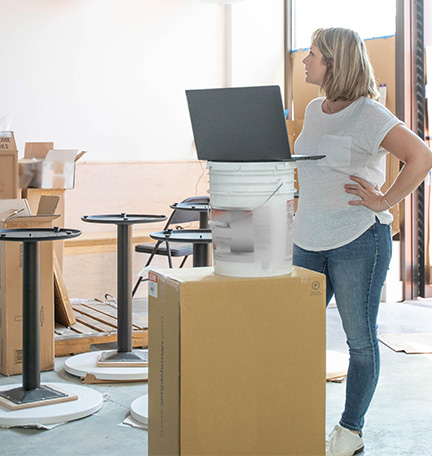Learn how to reduce fraudulent chargebacks and protect your business from point-of-sale (POS) fraud.
If you own a business, you’re probably well-aware of the risk of point-of-sale (POS) fraud, but you may be surprised by how widespread the problem is. According to LexisNexis’ 2021 True Costs of Fraud™ study, the average U.S. retailer faced 1,515 fraud attempts each month in 2020, and nearly half of those attempts were successful. Globally, industry research compiled by Nilson Report estimates that over $28.58 billion was lost to payment fraud during the same year.
Unfortunately, the cost of fraud can drastically exceed the actual dollar amount lost. According to LexisNexis, every $1 of fraud costs retailers and ecommerce merchants $3.60 due to loss of goods or services, shipping fees, and chargeback fees.
Common Types of POS Fraud
Similar to fraud targeting consumers, scams targeting businesses are varied and constantly evolving. However, at a high level, there are three categories of point-of-sale scams that retailers and service providers should be aware of: true fraud, chargeback fraud, and card testing fraud.
True fraud
One of the most well-known types of POS fraud is what’s commonly referred to as true fraud. In these cases, a criminal may use a stolen credit card to make a purchase in-person or online. Thanks to the uptick in cybercrime, true fraud has increasingly taken the form of criminals opening up new credit cards using stolen cardholder information acquired through data breaches or identity theft.
Chargeback fraud
Chargeback fraud is another type of fraud occurring at point-of-sale. This type of fraud is sometimes known as friendly fraud or first-party fraud due to the customer’s involvement. With this method, a customer (or a friend or family member) will use their credit card to make a legitimate payment for a good or service but will later contact their bank to deny having made the payment. While in some instances a chargeback can occur because a customer has failed to recognize the merchant name on their credit card statement and assumes they’ve been the victim of fraud, with friendly fraud, the customer is maliciously denying the card payment. Unfortunately, if the retailer or service provider is unable to furnish proof of a legitimate card payment, they may have to cover the chargeback amount and a chargeback fee. According to a 2020 Fraud.net study, friendly fraud is estimated to be 50% more common than true fraud and can result in a 1% reduction in legitimate sales.
Card testing fraud
In addition to true fraud and chargeback fraud, retailers and service providers who accept payments online may also be vulnerable to card testing fraud. Card testing occurs when criminals make numerous online payments or small purchases in order to verify whether a stolen credit card number is valid. In many cases, cybercriminals will use bots to test numerous credit card numbers at once. Because the amount of each individual purchase authorized is typically quite small, card testing fraud can often go undetected until it’s too late. Not only can the total sum of these fraudulent purchases and authorization fees be quite steep, but once a card number is validated, the criminals may then make larger fraudulent purchases from your business.
In each of these cases, businesses can end up losing both money and merchandise. That’s why it’s so important to take measures to prevent fraud at point-of-sale before it happens.
How to Prevent POS Fraud and Reduce Chargebacks
For today’s e-commerce and brick-and-mortar businesses, there are a few key ways to help minimize the risk of point-of-sale fraud and reduce chargebacks.
Require validation
To prevent fraud, businesses should require customer authentication. For in-store debit card purchases, customers should be asked to use their PIN. For purchases made online or by telephone, customers should be asked for their CVV code — the three- or four-digit code located on the back of their payment card. Requiring the customer to provide their PIN or CVV code can help verify that the customer is in possession of their payment card, which may help deter criminals.
Upgrade point-of-sale technology
For brick-and-mortar businesses, EMV chip and NFC technologies are an added step to help prevent fraudulent transactions. Because EMV chip terminals can read the encrypted data stored on the microchip embedded in the card, they are able to detect and decline counterfeit cards. Likewise, NFC terminals can wirelessly accept and authorize payment from a contactless card or from tokenized payment data stored on a smartphone. With this tokenization technology, actual card data isn’t stored in the merchant’s system, just the randomly generated token values — a measure which may ultimately help reduce liability and expedite PCI DSS compliance validation.
For even more advanced fraud protection, Elavon, the company that provides merchant services for Regions Bank customers, offers the latest POS technology, including security solutions designed to cover a range of needs, from authentication to encryption. Safe-T Solo, for example, provides up to $250,000 of breach assistance if your customers’ card data is compromised. Safe-T Link, meanwhile, greatly reduces the scope of PCI DSS compliance validation and supports tokenization of the customers’ payment card data.
To learn more about securing your payment transactions, boosting your cybersecurity, and protecting your business against fraud, visit regions.com/fraudprevention.











